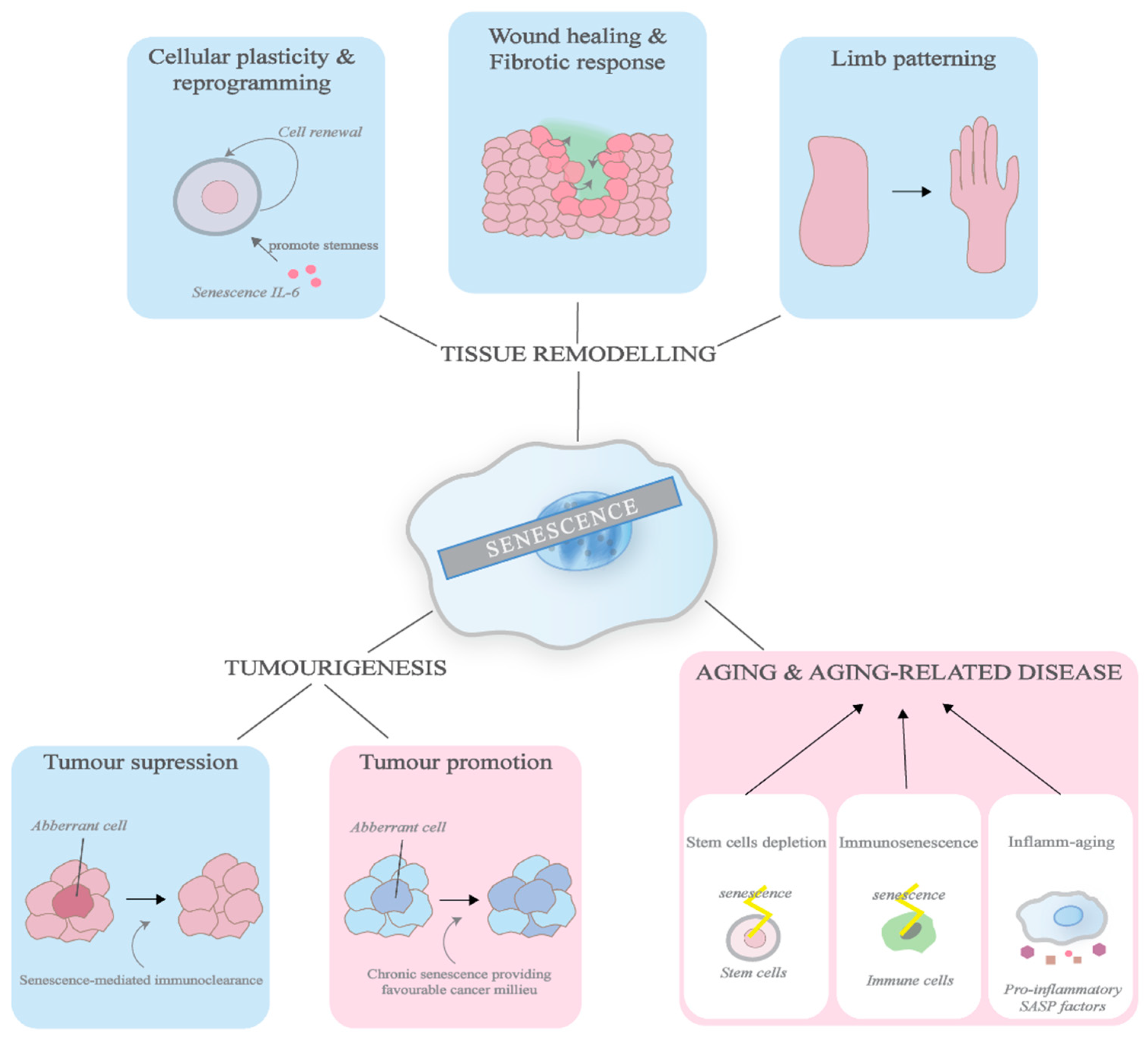Cellular Senescence Mechanisms and Biology Diagrams Cellular senescence is a process that is mainly designed to eliminate unwanted cells by inducing tissue remodelling. In general, cellular senescence promotes tissue remodelling through three Senescence, the cessation of cell division and permanent withdrawal from the cell cycle, is a process that occurs throughout the lifespan — during embryogenesis, growth and development, tissue remodeling, and in wound healing. Senescent cells increase in number during aging and have been implicated in the decline of organismal function over time, as well as in the progression of age related Abstract Cellular senescence is a process that results from a variety of stresses and leads to a state of irreversible growth arrest. Senescent cells accumulate during aging and have been implicated in promoting a variety of age-related diseases. Cellular senescence may play an important role in tumor suppression, wound healing, and protection against tissue fibrosis; however, accumulating

Cellular senescence regulates physiological and homeostatic processes, particularly during embryonic development and wound healing, but can also be a pathological process that contributes to Cellular senescence is a state where cells cease to divide due to aging factors. This process can be triggered by DNA damage or stress factors in the cellular microenvironment. Cellular senescence is a key mechanism in the aging process and plays a role in various age-related diseases. Understanding the underlying mechanisms of cellular senescence can provide insights into potential

Cell Process: How is cellular senescence related to aging? Biology Diagrams
The aging of the world's population has intensified interest in understanding the aging process and devising strategies and interventions to prolong a healthy life span. Cellular senescence, when cells become irreversibly growth arrested after a period of in vitro cell proliferation or in response to sublethal stress or oncogene expression (1, 2), plays a role in aging phenotypes and age Senescence is a cellular response characterized by a stable growth arrest and other phenotypic alterations that include a proinflammatory secretome. Senescence plays roles in normal development, maintains tissue homeostasis, and limits tumor progression. However, senescence has also been implicated as a major cause of age-related disease. Cellular senescence is a hallmark of aging defined by stable exit from the cell cycle in response to cellular damage and stress. Senescent cells (SnCs) can develop a characteristic pathogenic senescence-associated secretory phenotype (SASP) that drives secondary senescence and disrupts tissue homeostasis, resulting in loss of tissue repair and regeneration. The use of transgenic mouse models
